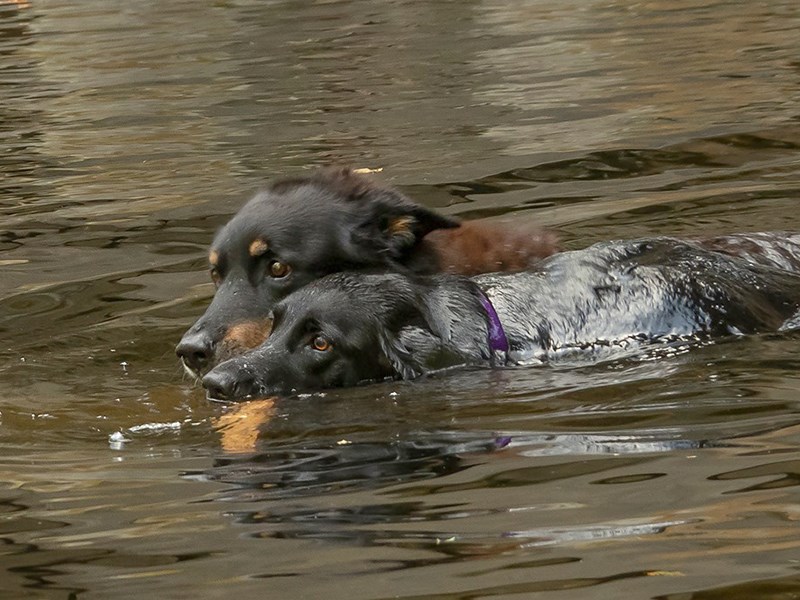If your dog jumps up on you, is it dominant? If your dog pulls ahead of you on a walk, is it showing you who’s boss? If your dog rushes out the door in front of you, is it alpha?
The answer is no.
Our interaction with dogs is not driven by dominance or social rank. It’s driven by reinforcement.
Behaviours that are reinforced repeat and strengthen. Behaviours that are not reinforced will eventually extinguish. It’s not dominance; it’s the science of behaviour and it applies to all species.
Canine behaviourist Patricia McConnell explains that “dominance” is misused and misunderstood in relation to dogs. Dominance is simply a description of a relationship between two individuals who want the same thing. One animal is said to be “dominant” over the other if he or she always has primary access to the pork chop that falls on the floor, a favourite toy, or your cozy lap.
Dominance is about the resolution of situations in which there is competition for a resource. It is not about rushing out the door first, pulling on leash, jumping up on people, or any other behaviours dogs engage in.
Dogs behave, as all species do, in order to meet their needs and to achieve desired consequences. If a dog pulls on the leash, it is not being dominant. The dog is excited about the walk, wants to get to all the interesting smells, and hasn’t yet been taught to walk on a loose leash. And if you let the dog pull, you are reinforcing the pulling and the dog will continue to do it.
When dogs “misbehave” or are “disobedient” it’s often because they have been reinforced for the undesirable behaviour.
Other reasons a dog might “misbehave” include not understanding what you are asking it to do. Sometimes we label dogs as “stubborn” when in fact they are simply confused or uncertain. Their only crime is not knowing how to be right.
It’s also possible your dog is not sufficiently motivated to comply. Dogs are opportunists and if chasing a squirrel competes with your request to come when called, the squirrel will win unless you consistently reinforce coming when called in the face of real life distractions.
Thinking in terms of dominance can lead to the use of aversive methods and tools such as shock, prong and choke collars. In modern dog training, however, there is no place for force, intimidation and pain.
Instead, thinking in terms of reinforcement helps us understand our dogs’ behaviour and shows us how we can change it in ways that rely on cooperation and build trust.
Prevent your dog from being reinforced for the behaviours you don’t want. Teach your dog and reinforce the behaviours you do want. That’s the recipe for successful training and a happy dog.
Sandy Middleton is a dog trainer and behaviour consultant based in Powell River. For more information, go to bestfriendsdogtraining.ca.
Join the Peak's email list for the top headlines right in your inbox Monday to Friday.



